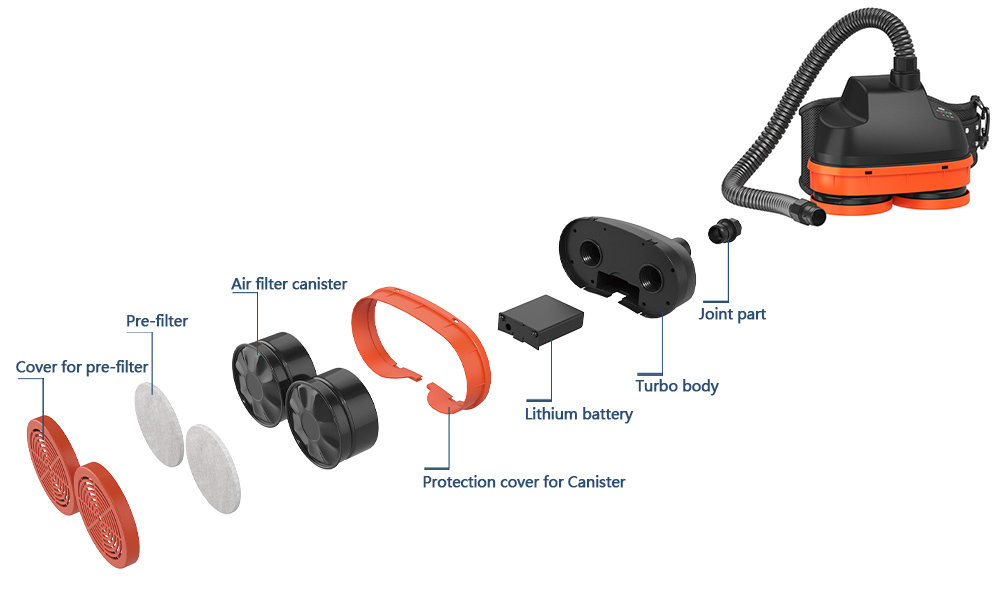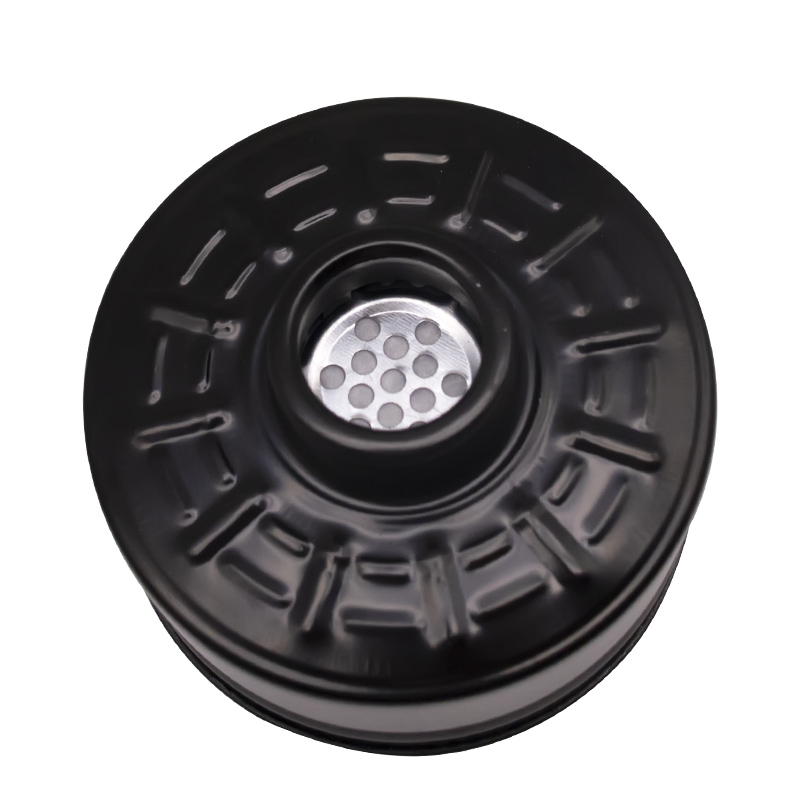In the respiratory protection system, gas mask canisters serve as the "core line of defense" against harmful gases/vapors—especially when paired with Powered Air-Purifying Respirators (PAPRs), which rely on high-quality canisters to deliver clean, filtered air. Their structural design and component selection directly determine the protection effectiveness against gas series such as A, B, E, and K (corresponding to organic gases, inorganic gases, acidic gases, and ammonia/amine gases mentioned earlier), making this match critical for users of powered respirator mask .Below is a breakdown of the working principle of gas mask canisters from two aspects: "layered structure" and "key components," with a focus on how they integrate with best papr respirator.
I. Typical Structure of Gas Mask Canisters: "Layered Protection Design" from Outside to Inside
Gas mask canisters usually adopt a cylindrical sealed structure (made of metal or high-strength plastic to ensure impact resistance and leakproofness)—a design tailored to fit the airflow systems of Powered Air-Purifying Respirators. Internally, they are divided into 4 core functional layers according to the "airflow direction." These layers work together to implement the protection logic of "first filtering impurities, then adsorbing/neutralizing harmful gases"—a process that aligns with the continuous air supply mechanism of papr respirator welding:
1. Outer Shell and Sealing Layer
- Function: Protect internal filter materials from moisture and damage, while ensuring airflow only passes through preset channels (to avoid "short-circuit leakage")—a non-negotiable requirement for Powered Air-Purifying Respirators, which depend on unobstructed, sealed airflow to maintain positive pressure in the mask.
- Details: The top/bottom of the shell is equipped with threaded interfaces, which can be accurately connected to the pipelines of face masks or Powered Air-Purifying Respirators (PAPRs). Rubber gaskets are usually installed at the interfaces to enhance sealing—this prevents unfiltered gas from directly entering the breathing zone, a risk that could undermine the protective effect of Powered Air-Purifying Respirators entirely.
2. Pre-Filtration Preprocessing Layer (Optional)
- Function: Filter particulates such as dust and water mist in the air to prevent them from clogging the pores of the subsequent adsorption layer, thereby extending the service life of the gas mask canister. For Powered Air-Purifying Respirators used in mixed-hazard environments (e.g., dusty chemical plants), this layer reduces the frequency of canister replacement and maintains consistent airflow.
- Applicable Scenarios: If particulates exist in the working environment (e.g., paint mist in spray booths, dust in chemical workshops), the gas mask canister will integrate this layer. Its material is similar to the "P-series particulate filter materials" mentioned earlier (e.g., melt-blown polypropylene fiber), which can achieve P1-P3 level filtration efficiency—ideal for pairing with Powered Air-Purifying Respirators in scenarios where both gases and particulates are present.
3. Core Adsorption/Neutralization Layer (Most Critical)
- Function: Capture and remove harmful gases/vapors through physical adsorption or chemical neutralization. It is the "core functional area" of the gas mask canister, and its components must be accurately matched to the type of gas to be protected (A/B/E/K series)—a match that directly affects the safety of users relying on Powered Air-Purifying Respirators for continuous protection.
- Structural Features: Adopts a "granular filter material filling" or "honeycomb filter element" design to increase the contact area between the filter material and airflow. This ensures full reaction of gases—essential for Powered Air-Purifying Respirators, which deliver a steady stream of air that must be fully purified before reaching the user.

4. Rear Support and Dust-Proof Layer
- Function: Fix the filter material of the core adsorption layer to prevent particles from falling off and entering the breathing zone; at the same time, block a small amount of fine impurities not filtered by the pre-filtration layer to further purify the airflow. This layer is particularly important for Powered Air-Purifying Respirators that operate at higher airflow rates, as faster air movement could dislodge loose filter particles without proper support.
- Material: Mostly breathable non-woven fabric or metal mesh, which has both support and air permeability—balancing structural stability with the airflow demands of Powered Air-Purifying Respirators.If you want know more, please click www.newairsafety.com.

